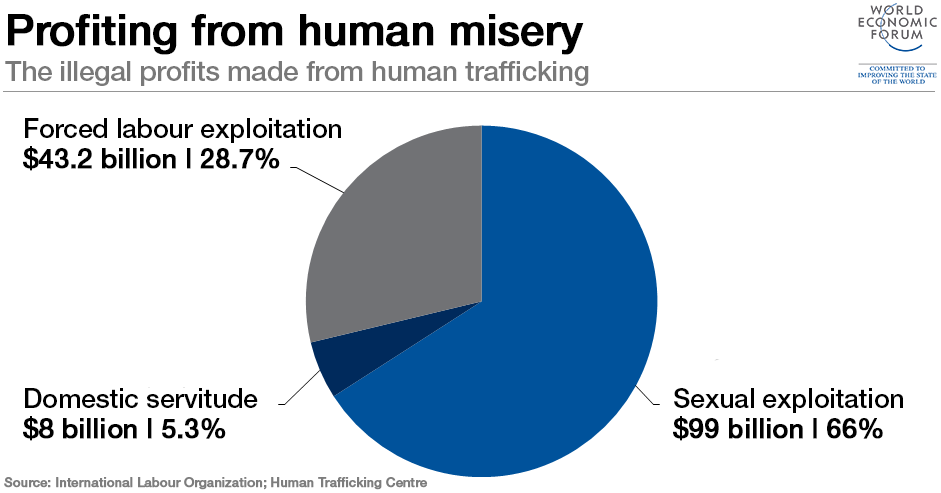What is modern slavery?


Get involved with our crowdsourced digital platform to deliver impact at scale
Stay up to date:
Global Governance
This article is published in collaboration with Thomson Reuters Foundation trust.org.
In the 15 years since a global treaty to combat human trafficking was adopted, modern slavery has gradually taken over as a catch-all term to describe human trafficking, forced labour, debt bondage, sex trafficking, forced marriage and other slave-like exploitation.
While there is no globally agreed definition of modern slavery, some of the key elements are defined below. Many forms of slavery involve more than one of these elements.
– BONDED LABOUR: People become bonded labourers after falling into debt and being forced to work for free to repay the lender. Many will never pay off their loans, and debt can be passed down through the generations. Bonded labour has existed for hundreds of years and flourishes in South Asia in agriculture, brick kilns, mills and factories.
– DESCENT-BASED SLAVERY: When people are born into slavery because their families belong to a class or caste of “slaves” in countries that have strict hierarchical social structures.
– FORCED LABOUR: When people are forced to work, usually for no or inadequate payment, as a result of violence or intimidation. Many find themselves trapped, often in a foreign country, with their passports confiscated by employers, and unable to leave.
– EARLY AND FORCED MARRIAGE: When children, usually girls, under 18 years old are married without their consent and forced into sexual and domestic servitude.
– HUMAN TRAFFICKING: This happens when men, women and children are exploited through the use of violence, deception or coercion and forced to work against their will. A key difference from people smuggling is that trafficking is done for the purpose of exploitation. People can be trafficked for many different forms of exploitation such as forced prostitution, forced labour, forced begging, forced criminality, domestic servitude, forced marriage, forced organ removal.
– ORGAN TRAFFICKING: Organ removal, while not as prevalent as sex or labour trafficking, is part of a thriving black market run by criminal gangs. It is included in the U.N. Trafficking in Persons Protocol as an exploitative practice. SOURCES: ILO (http://www.ilo.org/), Walk Free Foundation (http://www.walkfreefoundation.org), Free the Slaves (http://www.freetheslaves.net/), Anti-Trafficking Review (http://www.antitraffickingreview.org/index.php/atrjournal)
Publication does not imply endorsement of views by the World Economic Forum.
To keep up with the Agenda subscribe to our weekly newsletter.
Author: Astrid Zweynert is an award-winning journalist, editor and social media specialist with a passion for online storytelling.
Image: Suspected victims of human trafficking pray at a government shelter. REUTERS/Athit Perawongmetha.
Don't miss any update on this topic
Create a free account and access your personalized content collection with our latest publications and analyses.
License and Republishing
World Economic Forum articles may be republished in accordance with the Creative Commons Attribution-NonCommercial-NoDerivatives 4.0 International Public License, and in accordance with our Terms of Use.
The views expressed in this article are those of the author alone and not the World Economic Forum.
The Agenda Weekly
A weekly update of the most important issues driving the global agenda
You can unsubscribe at any time using the link in our emails. For more details, review our privacy policy.
More on Global GovernanceSee all
Efrem Garlando
April 16, 2024
Liam Coleman
March 7, 2024
David Elliott
March 1, 2024
Selina Hänni and Micol Lucchi
January 17, 2024
Luc Triangle
January 15, 2024
Anna Marks
January 11, 2024







